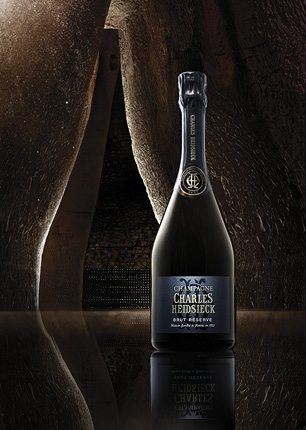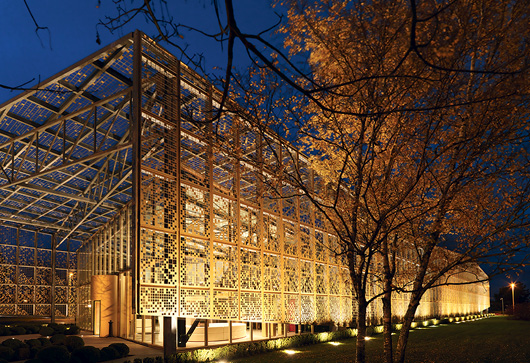- Home
- Media Kit
- Current Issue
- Past Issues
- Ad Specs-Submission
- Ad Print Settings
- Reprints (PDF)
- Photo Specifications (PDF)
- Contact Us

![]()
ONLINE

Quality and Value
Editors’ Note
Stephen Leroux set foot in the Champagne business in 1997 with the Vranken Champagne Group in various export management capacities. He then spent nine years at Bollinger as a Regional Export sales manager for Europe and Asia, followed by a position of Marketing Director and eventually Global Sales and Marketing Director. After a short stint with Louis Roederer, he assumed his current post. Leroux graduated from ISC and holds a post masters graduate degree in Management and Development of SMEs from the University of Reims.
Company Brief
Champagne Charles Heidsieck (charlesheidsieck.com) is one of the most recognized by the profession. The awards belong to the Cellar Masters who, over the course of the past two decades, have been named “Sparkling Winemaker of the Year” no fewer than 12 times by the International Wine Challenge (IWC), the U.K.s leading wine competition. Charles Heidsieck’s success began in the 19th Century. In 1859, four years after the creation of the House, Charles Heidsieck received the first and only gold medal ever awarded to a champagne producer during an exhibition in Bordeaux. Over the 10 past years, the House received more than 180 gold medals and some 32 Trophies.

A bottle of Charles Heidsieck Brut Reserve
in front of the entrance to Charles Heidsieck
Gallo-Roman chalk cellars (or ‘Crayères’)
Will you talk about how things have evolved for Champagne Charles Heidsieck to where they are today?
Charles Heidsieck has had a history of thick skin and a resistance to ebbs and flows from the beginning.
Charles Heidsieck was one of the heirs of a dynasty founded by Mr. Heidsieck who came from Germany in the 18th century, settled in Champagne, and started a champagne business. His grand nephew then decided to start his own business. At that time, there were many champagne houses that had started in the 18th century, and he created this business a century after that.
To differentiate, he decided to go into the U.S. where he opened a new champagne market from scratch. The business was in the hands of Charles Heidsieck and his heirs for five generations until 1985 when it was purchased by Remy Cointreau, who sold it in 2011 to a French family business called Société Européenne de Participations Industrielles (EPI).
During 164 years of history, the company has seen very good times and very difficult times, even when Charles Heidsieck was in the U.S. from 1854 to 1862 constantly traveling for periods ranging between six months and two years. Even so, the company skin was thick enough for it to always bounce back.
Will you discuss how the 2011 change of ownership back to a family business has impacted the company and the value that the owner has brought to the business?
During 25 years of ownership under Remy Cointreau, we were too small to maneuver within a large company. We need attention and love. We need capacity for expression, passion, and guts and we need that from morning until night. When we’re in a huge company, we’re lost in translation.
With the new acquisition, Mr. Christopher Descours, who has various businesses in the high luxury sector, likes to invest in businesses where he understands the value of the product, whether it comes from earth or from craftsmanship. We are now at the center of his preoccupation. It’s not a huge group but it’s a wealthy one with properties and real estate worldwide, and he’s very involved as an owner.

The House of Champagne Charles Heidsieck in Reims, France
Are you happy with your distribution channels today?
Yes. It’s a luxury champagne premium house so we’re focusing purely on what we call selective distribution – in other words, quality fine wine stores, high-end restaurants, luxury hotels, and first-class airlines. We’re extremely happy with this type of distribution.
In the U.S., we made an important change a year ago by moving the company from distribution by Remy Cointreau to Folio Fine Wine Partners, a Michael Mondavi Family company with which we share a common vision.
We are planning to restore Charles Heidsieck to what we want it to be in the U.S. market. This involves a 15-year plan to make it one of the major players not in terms of volume but in terms of what people should aspire to drink when it comes to high quality champagne.
Will you describe the product and your range of offerings?
We divide into two offerings: the non-vintage section and the vintage section. In non-vintage, we have a Brut Reserve white and rosé Reserve. With vintage, we have a vintage-dated Brut and vintage-dated rosé and, at the top half of the vintage section, we have the prestige cuvée – a wine called Blanc des Millenaires, which is 100 percent chardonnay.
For any given wine in our range, Charles Heidsieck offers something that our competitors cannot offer. We have a much longer aging process than our competitors. Our non-vintage is aged about five years in the bottle for the second fermentation whereas the rule in champagne is 15 months, and many prestige competitors are at 24 to 30 months max.
This is not to say our wines are better but they’re definitely unique and very recognizable because of everything that goes into the elaboration, which is time and quality of the vineyards and grapes.
How can you offer such a high quality product at such a reasonable price?
I have the ambition to increase the price step-by-step, but what we want to offer again and again is great quality for price, so we’re obsessed with that ratio.
Looking at competitors, our vintage can easily fight on taste with some of the top prestige cuvées in the champagne segment that are retailing at between twice and four times the price of my non-vintage. Therefore, there is room for us to increase step-by-step but still offer fantastic value.
Charles Heidsieck is also all about generosity and building true relationships so, in terms of ethics, we want to provide the consumer with fantastic value.
Of course, we are business people in the end and the price on grapes is going up all the time. Champagne has limited production and demand worldwide, so we have to reflect the price increase of grapes in our product pr-icing.
What excited you about joining this company?
It’s easy. We don’t want to over-think things. We just have to get up in the morning and continue to do what Charles Heidsieck did years ago, which was be a pioneer and never surrender. My humble job is to work with our team. When people try our wines, 99 times out of 100, they’re sold on them because they are unique. In this world of luxury, our customers are not just consumers – they are aficionados.•